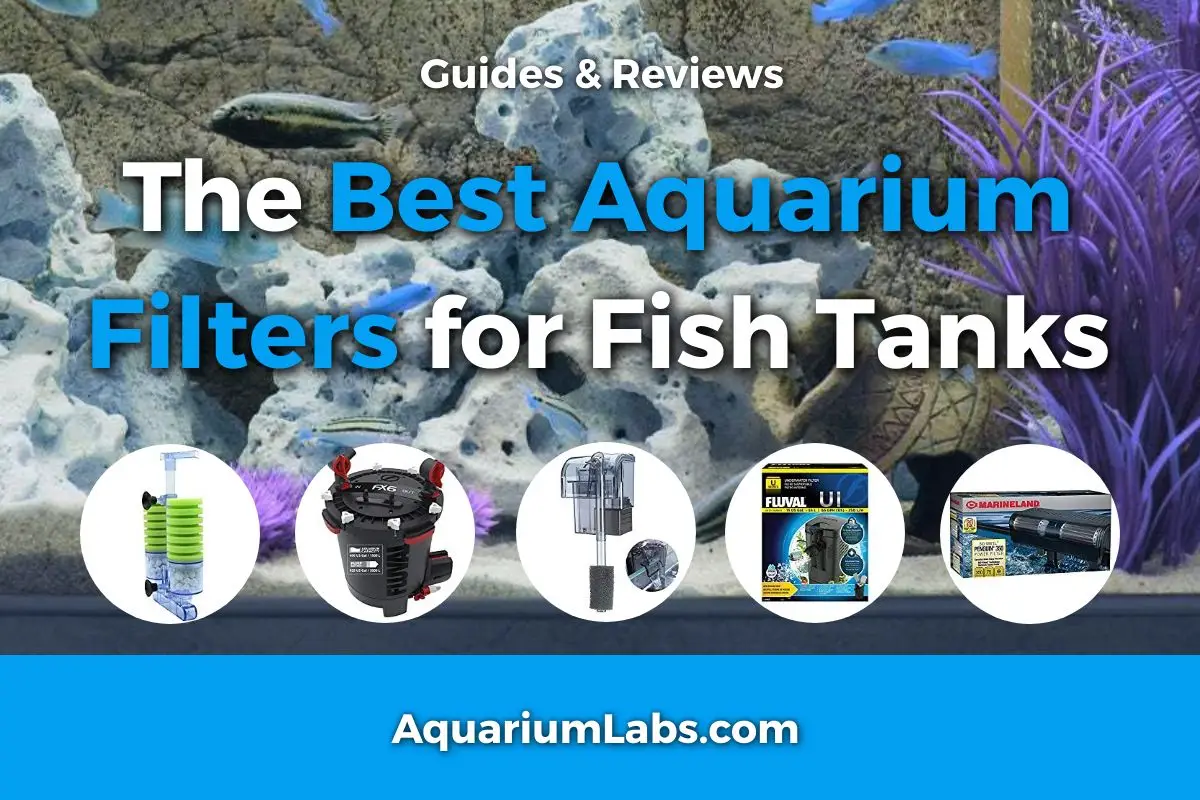Aquarium filters mean life or death for your pets. Few aquatic animals can live without a filter, and choosing the right one is the first step in getting a tank running that will last you years if done right.
Therefore, it is a really good idea to take the time to understand exactly what you are getting with your aquarium filter rather than simply buying the first thing in front of you.
In this guide to the best aquarium filters of 2024, we will take a comprehensive look at the best models around and what makes for a good filter. By the time you’re done reading this article, you’ll also know precisely how a filter works and why they are so effective for your fish’s health!
Getting to Know Aquarium Filters

Aquarium filters are an essential component of the life support system to any aquarium. Without a filter, your animals would very quickly choke in their own waste and die.
Filters process waste products, remove floating debris, assist carbon dioxide in leaving the system, and help heat and oxygen find their way to your pets!
While maintenance can sometimes be a drag, many filters only take minutes per month to clean and get running once again. Since there are few reasons not to run one, let’s first discuss how an aquarium filter even works!
How Does an Aquarium Filter Work?
At first glance, an aquarium filter may seem like a complicated beast of a machine. But believe it or not, they all work in very similar ways that can be easily understood with a bit of research!
The majority of aquarium filters pull in water and force it through a series of filter media chambers. The number of chambers may be one, as in the case of a simple sponge or power filter. Or there can be several, like more advanced power filters and canister filters offer!
Once water enters the unit, it comes into contact with each media chamber. After it has been polished of ammonia, nitrite, and nitrate (nitrogenous waste products), as well as free-floating organic compounds like proteins and amino acids, it then gets sent from the filter back into the fish tank.
Aquarium filters are essential because no matter how large your fish tank is, it is far more crowded than any natural ecosystem. In nature, pollutant levels like ammonia are usually so low they are undetectable.
This is because plants, bacteria, and other organisms all suck up and reuse anything that would normally go to waste. Many aquariums don’t even have live plants, so we need to provide a home for beneficial bacteria.
Also, we can use a good aquarium filter to simulate other natural processes by using chemical filtration methods!
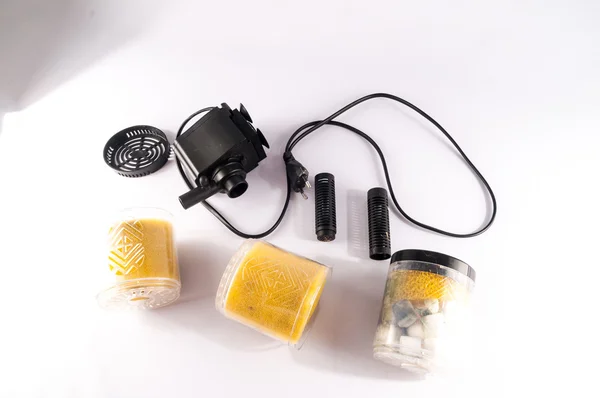
What is Filter Media?
Filter media is what makes aquarium filters work! Otherwise, you just have a pump and a box, which may look fancy but does not do very much. Simple aquarium filters may have one chamber for filter media, which isn’t necessarily bad!
A single chamber can still combine all three of the filtration types we are going to discuss below. These aquarium filters are the best freshwater aquarium filters for hobbyists that don’t keep demanding fish or invertebrates.
But many of the best aquarium filter designs include several chambers for all sorts of media. This allows you to add extra amounts of your favorite kind or target specific problems with specialty media.
For example, if you are having an ammonia spike due to an unreachable dead animal, you can add ammonia-absorbing zeolite resin to your filter’s media chamber. This resin will soak up ammonia much more quickly than your bacteria population can, reducing harm done to your pets!
Mechanical Filtration
The first stage an aquarium filter provides is mechanical filtration. This mode involves the use of a physical screen to trap particles floating in your water. Mechanical filtration sounds simple, and it usually is since cotton mesh or foam blocks are by far the most common methods.
But they also include more advanced designs like diatomaceous earth powder, which is fine enough to screen out microorganisms and fine particulates, polishing your water as it is pushed through!
Filter media using mechanical filtration can also provide extra living space for the elements that make up your biological filtration system (see below). Replacing mechanical filtration media usually involves either scrubbing it and putting it back in place or throwing it out for new media.
Chemical Filtration
Filter media that use chemical filtration take an even finer toothed comb to your fish tank water. As aquarium water enters the fish tank, filter free-floating ions like ammonia, amino acids (the precursors of proteins), and other molecules far too small to be trapped by a mechanical filter.
Usually, this means either an electrically charged attraction or an actual chemical reaction. Filter media that uses electrical attraction like many resins are actually rechargeable since you can free up the trapped ions by introducing new ones, like table salt!
On the other hand, activated carbon is the kind that gets used up as it collects molecular waste and needs to be thrown out and replaced.
Biological Filtration
Biological filtration is the last and most essential step of the aquarium filtration process! Saying it is the last step is a bit inaccurate, though, since it’s actually happening all of the time.
There are microorganisms living all throughout your fish tank that feed on nitrogenous waste products.
When fish release ammonia, it is poisonous to them – but both plants and bacteria find it to be a great source of nitrogen to consume! Eventually, nitrifying bacteria release nitrite, a lower energy product. Nitrite is less toxic than ammonia but still not very good for fish.
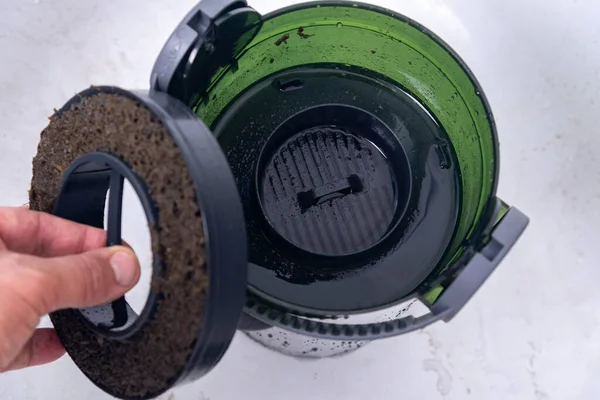
Fortunately, a second set of bacteria feed on nitrite, converting it into nitrate, which is only slightly poisonous. Fish tolerate nitrate levels anywhere from 10 to 40 ppm.
Nitrate can be metabolized by denitrifying bacteria as well into nitrogen gas, which just floats out of the fish tank. But these bacteria rarely exist in large numbers in home aquariums because they are anaerobic (oxygen-hating).
So you’ll have to step in at this point by performing regular water changes to remove nitrate from the system. Aquarium plants also consume nitrate but much more slowly than they feed on nitrite and ammonia.
The entire aquarium nitrogen cycle can sound a little complex if you are still new to cycling a filter and fish tank. Fortunately, Fluval Aquatics has made a great short video that explains the entire process for you to watch:
Aquarium Filter Types Explained
Now that we’ve covered how an aquarium filter operates at a basic level let’s talk about the differences between the types of aquarium filters out there! In this way, you will be better able to make an informed decision when setting up a new fish tank!
Hang on the Back Power Filters
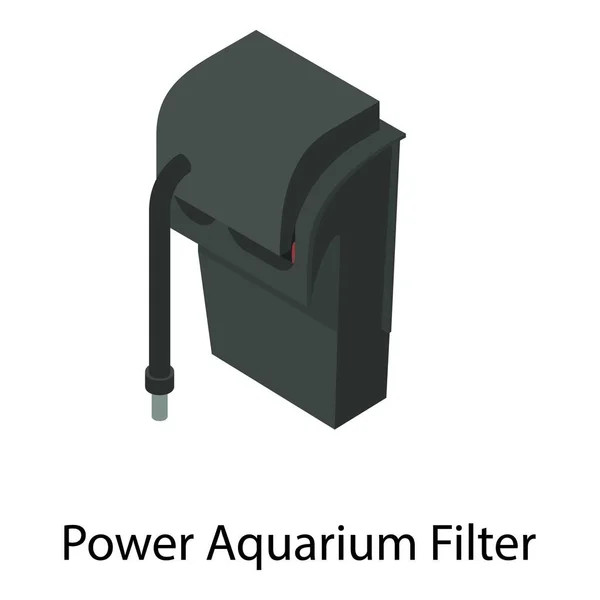
When most people think of aquarium filtration systems, these are the first thing that comes to mind. Hang on the back filters, also known as HOB filters, draw water right out of your aquarium.
They are a type of stage filtration, forcing water through one or several filter pads as well as media chambers.
Once the water comes into contact with all of the internal media, it is then sent right back into the tank. Some models use the outflow for surface agitation as well, which helps oxygenate the water and outgasses carbon dioxide.
HOB filters are the best filtration system for people looking for a good balance between effectiveness, water flow, ease of maintenance, and affordability.
While they don’t offer quite as much customizability as a canister filter, they can do 90% of what they do and cover all three of the major filtration types!
Benefits of a HOB Power Filter
- HOB filters usually use easy to swap out media cartridges for fast maintenance
- They can be set up and running within a few minutes
- The pumps used can be adjusted to provide very powerful water flow for surface agitation and even mixing of aquarium water
Drawbacks of a HOB Power Filter
- There is usually not enough room for specialty media pads like in a canister filter
- HOB filters take up space on the side or back of a fish tank, which can complicate placing the tank where you want it
Who is this Filter For?
HOB power filters are ideal for aquarists of all skill levels because they combine the benefits of most of the other types of filtration systems.
They are quiet, very effective, affordably priced, provide good water flow, and are simple to operate and maintain. The other types of filters are better used for specialized purposes or advanced aquarium setups.
Canister Filters
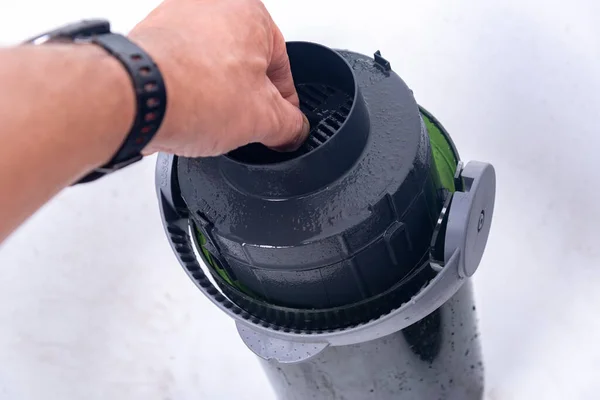
Canister filters are the aquarium filter of choice for intermediate and advanced fishkeepers with tanks 55 gallons in size or larger. They offer several benefits over traditional hang-on-back power filters that are worth considering.
For one, they can hold far more filter media than any power filter. The largest canister filter can hold a few gallons of material inside and effectively push water through it all with little to no bypassing.
These are by far the best aquarium filter for heavily stocked or large tanks, thanks to the power of the water flow they offer.
Canister filters have staged media baskets where you can add several kinds of custom media, something only a few power filters and no others allow.
Many also have advanced technological additions like release valves for instant water changes, precision flow control, and maintenance alert LEDs that make upkeep a breeze!
The largest canister filters also output an incredible amount of flow. Strong flow is especially important for large fish tanks to prevent dead zones from forming where oxygen and heat levels drop.
Related: How Canister Filters Work.
Benefits of a Canister Filter
- Powerful currents are driven by the large filter pumps to fully turn over large tanks 75 gallons in size or more
- Each media chamber is large enough for any sort of filter media you wish to use, and you get several to customize
- Many canister filter designs offer additional features like release valves, auto priming and air purging, and maintenance alert LEDs
Drawbacks of a Canister Filter
- A good canister filter costs significantly more than a good power filter
- They are large and need to be hidden in a stand to keep from detracting from your aquarium’s appearance
- Canister filter maintenance will often take much longer compared to other filtration systems
Who is this Filter For?
These filters are ideal for intermediate to advanced aquarists who have fish that are highly sensitive to dissolved waste and need the best water quality.
If you have an aquarium larger than 125 gallons, a canister filter is essential for good water turnover. And large, predatory fish keepers should be using one to ensure poop, ammonia, and nitrite are properly captured and processed.
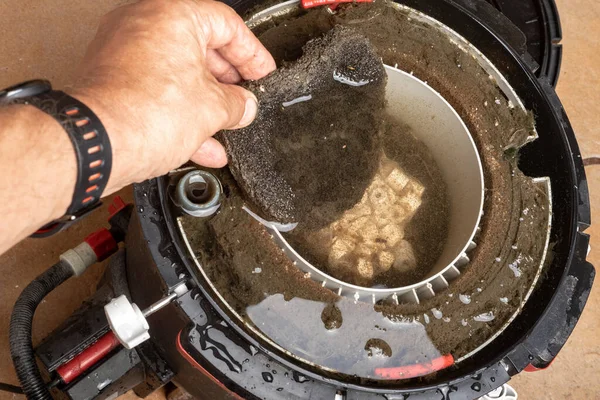
Undergravel Filters
Undergravel filter units are some of the oldest designs still in existence. The basic concept is simple: they are attached to air pumps which force water to be drawn down through the gravel, acting as a mechanical filtration screen.
Waste gets pulled into the substrate and trapped beneath it and the filter plates, where it stays while the screened water gets released back into the fish tank.
This approach can work well for many months at a time and is actually one of the best filtration system options for planted tanks. The debris caught under the substrate forms a thick mulm that provides endless fertilizer for heavily planted aquascapes.
However, for most fish-only tanks, undergravel filters only delay eventual maintenance. And when it is time to maintain it, which usually needs to happen every 6 months or so, it can be a very messy affair.
Once you lift the filter plate, it’s difficult not to have loads of gunk start floating up into the main area of your aquarium. Not only is it messy, but your gravel gets easily displaced, and much of it will now get trapped underneath your under gravel filter plates.
In theory, they are supposed to keep waste trapped until it decays. But it never fully does so – plus, even if it all breaks down, you are still left with heavy concentrations of nitrate and organic matter that mean more frequent water changes.
I only recommend under gravel filters for lightly stocked aquariums or heavily planted tanks for fertilizer.
Benefits of an Undergravel Filter
- Undergravel filters are highly discreet and minimize hoses and lines running to the fish tank
- These aquarium filters pull water through all levels of the tank, ensuring everything mixes equally
- They are very affordable and simple to set up and run, often lasting many years longer than complex power filter designs
Drawbacks of an Undergravel Filter
- Undergravel filters provide practically no biological or chemical filtration; only some premium undergravel filter designs have carbon attachments
- An undergravel filter does not work with fine sand or gravel; the slots work best with standard gravel grains only
- They need to be added to a brand new tank, not one that is already running
- Fish waste is trapped under the plate indefinitely until you clean underneath, which is extremely messy
Who is this Filter For?
- Planted aquascapes where you won’t be disturbing the substrate and the plants will absorb the collected waste
Related:
Sponge Filters
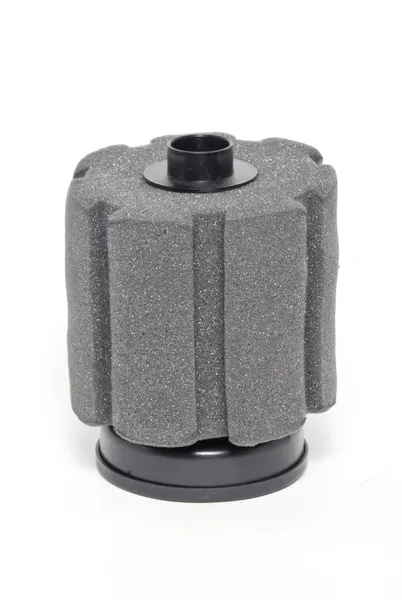
Sponge filters were one of the first filters used in aquariums – but while they are the simplest, they are still very effective. A sponge filter is exactly what it sounds like: a sponge that is attached to an air pump to create a flow of water through it.
As water is pulled through, it is subjected to mechanical filtration that screens out floating particles of waste.
Sponge filters are the best aquarium filters for systems that need a gentle flow. Especially if you have a fry rearing tank for newborn fish, dwarf shrimp, or other critters that are in danger of being sucked up by power filters.
But is that all there is to a sponge filter? They actually offer excellent mechanical and biological filtration because the sponge becomes a place for beneficial bacteria to colonize.
The sponge pores hold loads of surface area for these bacteria to live in, breaking down waste products like ammonia into nitrite and nitrates.
Modern sponge filters also can hold activated carbon media cartridges if you want to add chemical filtration to the system. Lastly, they are extremely low maintenance, fast to set up, and very affordable!
Benefits of a Sponge Filter
- Low maintenance and very uncomplicated
- Gentle current keeps baby fish and shrimp from being killed
- Adequate biological and mechanical filtration for smaller tanks
- Chemical filtration can be added on
Drawbacks of a Sponge Filter
- Sponge filters are less effective for tanks larger than 30 gallons due to the weak flow rate
- Smaller tank filters may not provide water turnover for effective heat and oxygen exchange
- Not very customizable
- Usually terrible looking
Who is this Filter For?
Sponge filters are best for aquarists who are setting up a tank for a very specific purpose, such as rearing baby fish or a temporary quarantine for sick fish. Or if you are an aquarist on a very strict budget and can afford nothing better for your small tank.
Wet/Dry Filters (Sumps)
Sump filters are quite special and are especially popular in the saltwater world. They are extremely customizable and are basically a secondary aquarium that sits below the first! A wet/dry filter adds significantly more water volume to the system, increasing its carrying capacity.
And depending on how you set it up, it can provide mechanical, chemical, or biological filtration – or all three in stages. Sometimes, a sump uses entire sections full of living organisms (a refugium) like macroalgae, soft corals, and microcrustaceans.
These organisms feed on nitrogenous waste, leftover food, and feces, breaking it down before it returns to the main tank. And you can even harvest small numbers of these organisms to feed your fish and corals!
Wet/dry filters are less common on freshwater tanks but not unheard of. Especially for pet stores and warehouse distributors that need to manage the huge bioload of all that animal stock!
Benefits of a Sump Filter
- Significantly increases the carrying capacity of your tank with so much extra water
- Very customizable as you have room for any kind of filter media you want
- Uses a gravity-fed system and only requires a weak return pump, making it very quiet
Drawbacks of a Sump Filter
- Complex and expensive to set up; they are the best aquarium filters for advanced fish keepers
- A sump filter can take up a lot of room; as much as a second aquarium
- Sumps are usually used in addition to a hob filter or canister filters
Who is this Filter For?
Sump filters are ideal for reef keepers that need to absorb every trace of pollutants to keep their corals healthy. They also can add as much as an extra 30% to the water volume of your system, improving the health of all your animals through extra oxygen and a larger buffer against waste products.
Related:
Submersible/Internal Filters
Last we have internal filters, also known as submersible filters. These models are designed similarly to a canister filter or power filter. Most have either internal media compartments or a filter cartridge that you remove every few weeks for a new one.
The difference is that these aquarium filters actually sit inside your fish tank rather than being placed underneath or staying clipped onto the side.
This allows them to create a current that can be directed like a powerhead effectively with little surface agitation with the noise and splashing that entails.
Submersible filters also make placing an aquarium flush against a wall or other home element easier, saving you space externally at the cost of some internal swimming room for your fish. And don’t forget: since the unit is submerged, you’ll need to get a little wet to perform maintenance on them!
Benefits of a Submersible/Internal Filter:
- Discreet, silent, and easy to maintain
- Does not take up space around the exterior of the aquarium
- Provides good water turnover without making noise at the surface
Drawbacks of a Submersible/Internal Filter:
- Maintenance can take a little longer since you have to reach in and replace the unit each time
- They are no more effective at providing good water quality than power or canister filtration designs
Who is this Filter For?
Internal filters are ideal for fish keepers looking to provide gentle current for their fish and want a silent running unit.
Submersible filter outflow can be very easily directed in ways that canister and HOB power filters can’t.
They are also a great filter choice for space-conscious aquarists, such as home office and dorm room setups that need to make the most of every inch!
Our Pick For The Best Canister Filter

There are dozens of great canister filters on the market, but one standout candidate that makes the best aquarium filter lists time and time again.
The Fluval FX6 is a canister filter using the latest technology combined with the decades of prior experience that Hagen-Fluval has in developing aquarium equipment.
Here we have a leak-proof 563 GPH (gallons per hour) canister filter with nearly 5 gallons of space for biological filtration media. Maintenance on canister filters can be a tremendous pain due to the water-filled lines, which can send gravity flow onto your floor when opening the unit.
But the Fluval FX6 uses auto stop-valves to prevent this.
Five internal filter media chambers give you loads of room to add your favorites.
Since you’ll likely be caring for large fish for specialized needs, these might include ammonia absorbing resin pillows, phosphate reducers for coral reef tanks, and other specialty media options that would not fit in a standard HOB power filter.
What’s more, the Fluval FX6 improves on standard aquarium and canister filter maintenance! A utility valve at the base of the unit allows you to perform quick and easy water changes, emptying and refilling your aquarium from the filter.
The FX6 also auto purges any air that gets trapped within the system on a 12-hour cycle – air that would normally disrupt the flow of water.
Interestingly, even though the FX6 is a stronger unit in terms of flow than the FX5, it actually uses 10% less power, according to Fluval-Hagen, making it a very energy-efficient filter.
Still, this huge canister filter is rated for aquariums of 400 gallons or more in size. If you’re looking for the best aquarium filter for modestly large units (150-300 gallons), then the FX4 is a better purchase.
Pros:
- Great aquarium filter for extra-large tanks (400+ gallons)
- 5 stackable filter media chambers with a total volume of 5 gallons
- 563 GPH turnover rate ensures adequate flow in all regions of a large tank with no dead zones for heat or oxygen
- Self-priming and air purging; also has a base valve for speedy water changes
Cons:
- Not nearly as affordable as other external canister filter options
- Too much flow for any but the largest of freshwater and saltwater aquariums
Our Pick For The Best HOB Filter

This category of aquarium filters was by far the hardest to choose from because several manufacturers have been perfecting their products for decades. But our personal favorite by a slim margin is the Marineland Penguin Bio-Wheel Power Filter.
Marineland Penguin was the first to come up with the Bio-Wheel idea decades ago, and it is still a brilliant notion. Nitrifying bacteria that digest ammonia into nitrite and nitrite into nitrate are aerobic, meaning they breathe oxygen.
The Bio-Wheel ensures they are given exposure to the hundredfold increase of air in the atmosphere, plus allowed to remain moist and in contact with food.
The rear compartment is where you add Marineland filter cartridges, which use a plastic frame with cotton fitted over them. You can buy Marineland filter cartridges in just about any pet store in the country; that’s how big the brand is.
Inside, you will find activated carbon, the chemical filtration media of choice for the aquarium world.
Each filter pump uses just enough flow without becoming overly noisy. Marineland Bio-Wheel HOB filter is rated for aquariums up to 75 gallons in size. While larger tanks are less common, it does limit their utility somewhat.
Pros:
- Bio-Wheel design brilliantly oxygenates bacteria for instant ammonia and nitrite breakdown on contact
- Quiet running and affordably priced unit
- Marineland Penguin has perfected the design over decades
- 3 Year Manufacturer’s Defect Warranty
Cons:
- Does not offer the customizable inner space of some other power filters or canister filters; it only allows you to add filter cartridges made by Marineland Penguin
- No models made for aquariums larger than 75 gallons unless you add multiple aquarium filters to the tank
Our Pick For The Best Internal Filter

Internal aquarium filters offer several major advantages, including taking up less space on the sides of a fish tank and being able to be hidden by plants and rocks. Our pick for the best internal aquarium filter is the Fluval U Series Underwater Filter for Aquariums!
These internal filters use a three-stage media chamber design, ensuring you get the most out of your mechanical, biological, and chemical filtration media!
Fluval designed their internal filters to be customizable in how the units are placed as well. You can opt to attach the unit vertically against the glass for a horizontal flow – or let it sit on the bottom and allow water to be pushed upwards!
Changing the media of internal filters does usually mean getting your hands wet. But the speed of access to the internal chambers makes this even less of an issue compared to a power or canister filter, which can be a much fussier process.
Lastly, you have a 3-way adjustable flow feature with this internal filter! Water flow can be customized to agitate the surface, maximizing gas exchange.
A midwater flow can be set to spread the current evenly across your aquarium. Or you can prioritize bottom-level turnover with the third setting, ensuring no heat or oxygen dead spots form along the substrate.
Pros:
- Flexibly positioned anywhere inside your aquarium, freeing up outside space of boxy HOB filters
- 3-way adjustable flow feature
- Quick access to interior chambers for maintenance
Cons:
- Maintenance requires getting a little wet
- Internal chambers are small compared to canister and HOB filters
Our Pick For The Best Small Fish Tank Filter

Smaller aquariums in the range of 5 gallons can be a little complex because they are larger than desktop models but too small for many power filter designs. In that case, why not try the Boxtech Aquarium Hang On Filter models?
Boxtech designed these aquarium filters for tanks of all sizes, but their 5 to 10-gallon model is especially handy for small tanks. We want just the right amount of water turnover without blowing our fish around, which can easily happen if your power filter is too strong.
And should you need greater or lesser flow, a flow control knob sits directly on the front of the water intake tube. Even many more advanced hob filters don’t always provide these, making this a solid win for boxtech!
These boxtech models use power filter cartridges that provide mechanical, chemical, and biological filtration all in one unit. We would have liked to see greater biological filtration capacity; maybe some bio bag filter cartridges or something similar.
But given the size of the unit, space is at a real premium.
Pros:
- Sized small enough for 5-gallon aquariums
- Includes filter cartridges that provide all 3 modes of filtration
- Classic hob filter design for easy installation and maintenance
- Flow control valve on water intake
Cons:
- Little extra biological filtration capacity
Our Pick For The Best Sponge Fish Tank Filter

As the UPETTOOLS Aquarium Biochemical Sponge Filter proves, sponge filters have come a long way from the old days of simple blocks of foam! What immediately catches our attention is the way the foam sponge has been cut with deep grooves.
These grooves increase the surface area of the sponge and improve both the rate of particulate capture as well as provide more living space for bacteria that help break down collected waste!
What’s more, UPETOOLS includes a second stage of filtration using bio balls to provide more living space for beneficial nitrifying bacteria to live in.
While sponge filters already do a decent job at biological filtration, you can never have enough, especially given how weak their flow is compared to HOB, internal, or a canister filter.
We also like how they use both single and twin sponge designs, giving you as much or as little capacity as you need for your aquarium. According to UPETOOLS, their twin sponge filter are a good aquarium filter for tanks up to 55 gallons in volume!
Pros:
- Uses both single and twin sponges for aquariums of all sizes
- Provides gentle flow for baby fish, shrimp, and other sensitive creatures
- Second filtration stage uses bio-balls to increase the number of beneficial bacteria living inside the aquarium filter
Cons:
- This aquarium filter provides no chemical filtration, which some other sponge filter designs do offer
- Flow rate is too low for good turnover in larger aquariums
Our Pick For The Best Under Gravel Fish Tank Filter

Undergravel filters are making a comeback these days! While they do have some drawbacks, they can still be one of the best aquarium filters, especially for planted tanks!
The Penn-Plax Clear-Free Premium Under Gravel Aquarium Filter is our favorite; the company has spent decades honing its filtration models, and this undergravel unit is no different.
For starters, Penn-Plax includes clever clipping mechanisms that hold the filter together. This prevents determined diggers like cichlid and loaches from getting underneath the filter, which would send a plume of fish waste into the water column.
This model also uses corrosion-resistant plastic, making it safe even for saltwater aquariums, which are sometimes hard on cheaper equipment.
And best of all, we have activated carbon inserts attached to the water outflow, giving your aquarium an extra scrubbing to remove any dissolved organic matter!
Pros:
- Chemical filtration and locking plates address two of the traditional weaknesses of undergravel filters
- Corrosion-resistant plastic makes it a good choice for even saltwater aquariums
- Comes in sizes large enough for 40 and 55-gallon tanks
Cons:
- Debris still remains trapped underneath the filter plate rather than removed effectively from the system
- Maintenance on undergravel filters is always very messy
More Aquarium Filter Reviews
AquaClear Power Filter

AquaClear HOB filters are some of our favorites because they combine many of the benefits of canister filters with the easy maintenance and low cost of power filters. For example, the AquaClear Power Filter lineup offers loads of space in the media chamber, enough for custom media bags.
Even in their smallest tank filters, rated for 5 to 20 gallons, you can choose between their media bags or making your own.
I always recommend AquaClear filters for aquarists making specialized nano tanks in need of such media, including nano reefs and planted tanks with exacting water chemistry!
The water turnover rate is very high as well, making them the best fish tank filters if you need a replacement for an air pump or powerhead.
AquaClear includes not only a foam block and activated carbon package but also their BioMax ceramic rings. Each ring provides loads of surface area for nitrifying bacteria to colonize, increasing the waste breakdown potential of the filter!
Pros:
- Customizable power filter that is similar to a canister filter in design
- Strong water flow from the magnetic pump
Cons:
- Few additional features; the unit is effective but very simple
- Does not use a self-priming pump
AMOSIJOY 172/225/265/528/660 GPH Ultra-Quiet External Canister Filter

Beginning aquarists often pass over canister filters because they are a pricier option. Still, there is no question that they are the best aquarium filter for larger and heavily stocked fish tanks.
And the AMOSIJOY Ultra-Quiet External Canister Filter breaks the trend of being expensive by being a very affordable yet effective aquarium filter design!
Like many of the best canister aquarium filter designs, the AMOSIJOY has adjustable flow rate controls on the top of the unit, allowing you to fine-tune water flow to the fish tank.
The motor is designed to operate quietly, and when paired with the rubberized footing, it is nearly silent, making it ideal for bedrooms, offices, and other noise-sensitive spaces.
We even have the option of models for aquariums as small as 30 gallons in volume. Few canister aquarium filters have pumps gentle enough for these tanks!
AMOSIJOY does not include quite as much media as we would have liked to have seen; you do receive ceramic bio balls and a cotton screen as basic filter media. But you’ll need to buy your own bulk media to fill the space within effectively!
Pros:
- Very affordably priced line of smaller canister filter
- Best aquarium filters for the most common medium-sized aquariums of 30 to 75 gallons
- Rubberized casing and silent magnetic driven motors for silent operation
- Adjustable flow rate controls on the hood of the filtration system
Cons:
- Filtration system comes with few media options; you need to supply all of them
- No models for aquariums larger than 75 gallons
Tetra Whisper Internal Filter

No filtration system lineup would be complete without an example from Tetra! Their dedicated lineup of aquarium supplies includes some of the best aquarium filters you will find: the Tetra Whisper Internal Filter.
This design is more straightforward in concept than the previously mentioned Fluval U Series Underwater Filter. What you’ll notice right away is that Tetra’s internal filter is more of a hybrid between a submersible filter and a hang on back filter.
The Tetra Whisper filters sit inside the tank but hang on the lip and can’t be fully submerged.
However, it does prevent space from being taken up outside the filter, making it easier to place aquariums flush against a wall or home decor. The Tetra Whisper aquarium filter also comes in models small enough for desktop nano and betta tanks 1 to 4 gallons in size!
Pros:
- Simple and effective filtration for smaller desktop aquariums
- Uses a single filter cartridge for fast and easy maintenance
- Sits inside the tank, allowing you to move an aquarium flush against a wall or home decor
Cons:
- Not a true internal filter since it can’t be fully submerged, unlike the Fluval U Series internal filters
NICREW Aquarium Submersible Power Filter

Nicrew is something of a new player in the fishkeeping world, but people have been increasingly excited about their products. They make not only high-quality, affordable LED lighting and circulation pumps but also great internal filters!
The NICREW Aquarium Submersible Power Filter is our favorite example, thanks to it being significantly smaller than Fluval’s option while also being truly submersible, unlike the Tetra Whisper.
What’s more, you can also use the included spray bar attachment to provide surface agitation, something internal filters normally don’t do very well!
Four suction cups adhere the unit to the side glass of your fish tank and allow you to easily access it for maintenance purposes. And with models rated from 2 to 40-gallon aquariums, Nicrew has offerings for all of the most popular fish tank sizes!
Pros:
- Submersible filter small enough for desktop tanks and large enough for aquariums up to 40 gallons
- Spray bar provides excellent surface agitation and spreads flow around to avoid disturbing sensitive fish and plants
- Fully submersible unit
Cons:
- No effective options for aquariums larger than 40 gallons
- Only meant to be run sitting vertically, unlike the Fluval U Series, which can be placed on the substrate
Wrapping Things Up
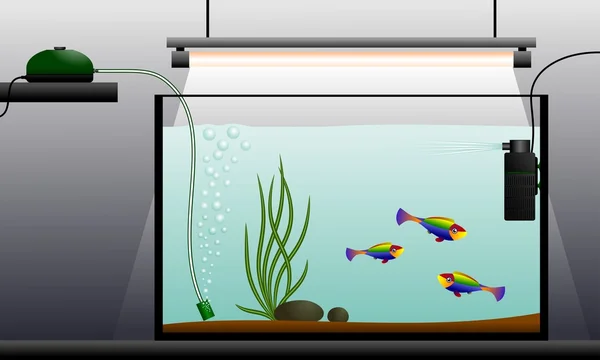
As you’ve no doubt come to appreciate, aquarium filters are a complex topic. There are dozens of brands and hundreds of models, many of which only vary from each other a little bit. That can tempt you to simply reach for the first or cheapest thing you come across.
Fortunately, this guide demonstrates that there are differences worth noting. And that not all aquarium filtration systems are equal. Each of the best aquarium filter options listed here offers solid benefits for fish keepers.
Whether you are a beginner in need of a simple to run sponge or power filter or an advanced aquarist looking for a canister filtration system for a reef tank, there is something for everyone here!

